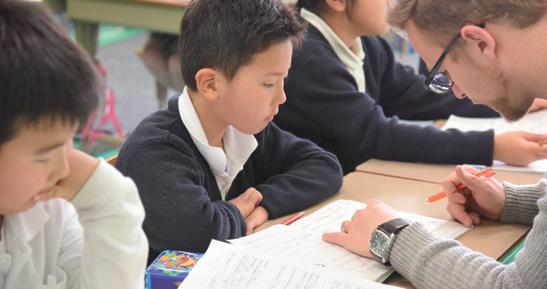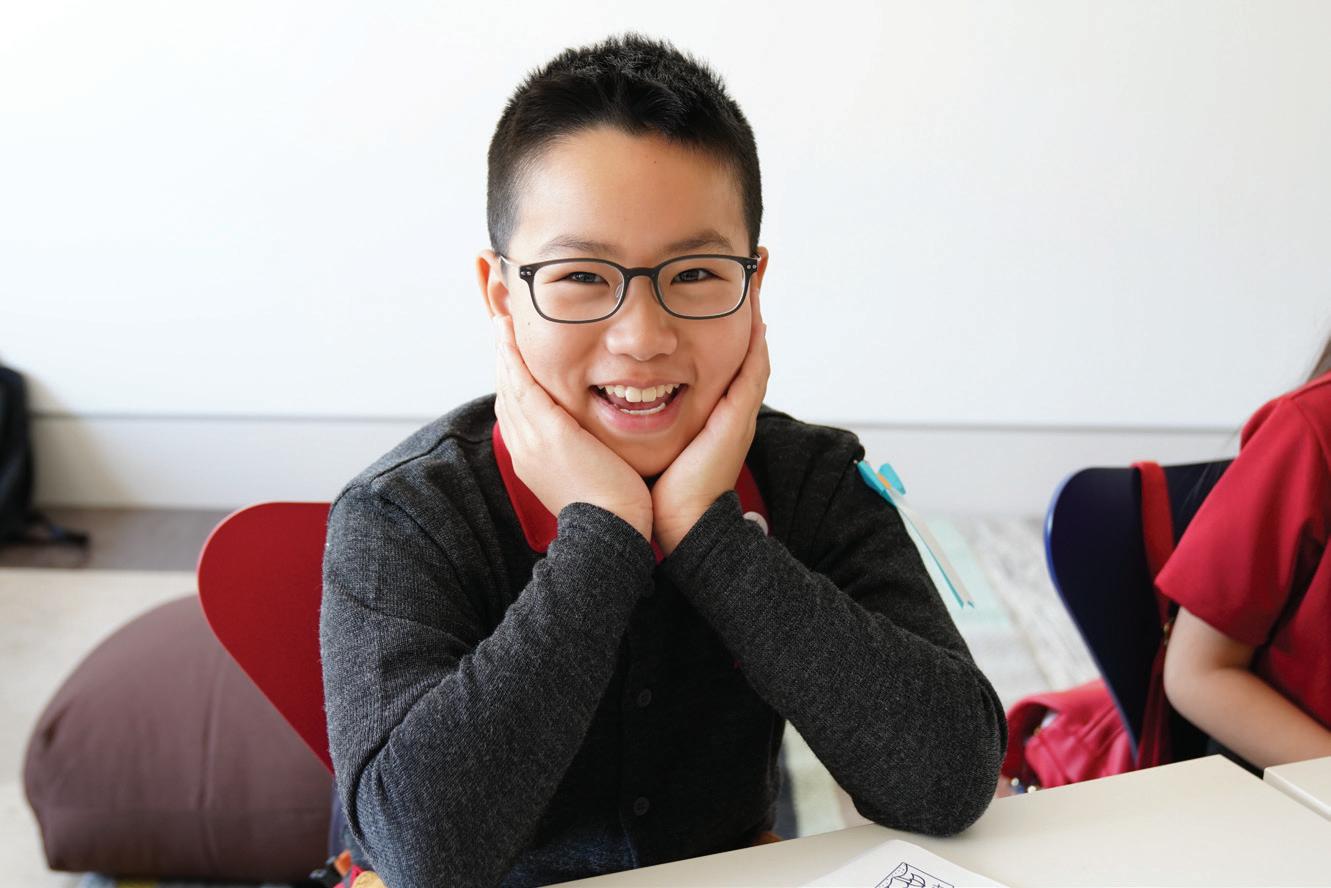
13 minute read
PARTNER CONTENT
SYMBOLIC BUSINESS
How emoji became a multimillion-dollar business
Advertisement
By Fran Kuzui

With emoticons originating in the West in the 1970s and 1980s and emoji in Japan in the 1990s, symbols have capitalized on the smartphone boom and helped to change the way people communicate with each other in the 21st century, giving rise to a vibrant form of interaction. Today, they are also a multimillion-dollar phenomenon in Asia.
“Emoji and stickers are a form of social glue, especially in Asia. They present an opportunity for bonding,” said Alisa Freedman, assistant professor of Japanese literature and film at the University of Oregon.
Forms of communication in Japan have traditionally been complex and subtle, involving politeness and nonverbal cues. For the Japanese, avoiding miscommunication proved tricky without social context, which would dictate proper forms of address. Letters usually include an honorific salutation, a seasonal greeting, and, possibly, a “by the way” as a segue to the true point of the message.
CHANGING TIMES Email began to strip away at this subtlety, encouraging a more informal style without these conventions. At the same time, in the mid-1990s, small pagers became all the rage in
Japan—especially among girls. They loved the heart icon in the messaging function and avidly created emoticons and kaomoji using the keyboard, according to Shigetaka Kurita, creator of the first widely used set of emoji. “That was my main inspiration,” he told The Guardian newspaper years later. Emoticons and simple kaomoji became a way of softening written messages by adding pictograms, but they were complex and time consuming to use because you had to enter multiple characters on a keyboard. Mobile phone operator NTT Docomo Inc. had turned to Kurita, a 20-something employee, to solve its very Japanese problem: how to render these unsubtle symbols of subtle emotions.
Kurita was tasked with creating single graphics to use instead of typed-out emoticons. He developed the idea of using simple picture symbols, or emoji—the word derives from the Japanese characters for “picture” and “character”— requiring one click to express a range of emotions. What he did not know was that he was changing the way people communicate.
“We already had the experience with the heart symbol, so we thought it was possible,” Kurita said in a 2013 interview. Not being a designer, he borrowed symbols prevalent in Japan, utilizing manga comics, kawaii (cute) culture, street signs, and Japanese letters that an entire generation had been raised on.
Other Japanese carriers responded by creating their own designs. Propelled largely by young Japanese women, emoji were ubiquitous in Japan by the early 2000s, but not yet ready to emigrate to global stardom.
TURNING POINT The trigger was Apple Inc.’s 2008 launch of the iPhone in Japan, which was unpopular with consumers because it did not include emoji. That changed after an intervention by Masayoshi Son, president of Apple’s Japanese partner SoftBank Corp., who told journalists that he “convinced Apple that email without emoji isn’t email in Japan.”
Soon, the California-based company added emoji for the Japanese market, and the idiosyncratic Japanese phenomenon became an international communications sensation in 2011 when Apple put an emoji keyboard on its worldwide iPhone operating system. Within a few years, the original emoji had been placed into the collection of the Museum of Modern Art in New York City and, in 2017, the expanded range was headlining in its own Hollywood film.
“What makes [emoji] unique is that they globalized differently from most Japanese pop culture,” according to Freedman. “Unlike Godzilla and Hello Kitty, they aren’t about industry and commerce. They blend into our lives and live with us in our phones as part of our daily communication.”
DROP ME A LINE One of the biggest forces in emoji culture today is Line, a messaging app developed by Naver Corp., South Korea’s largest search engine company. It attracted 300 million users worldwide within three years of its introduction, according to Line Corp.

All these symbols signify “confused,” and they have become part of a universal language. The first is a basic emoticon using punctuation marks and letters; the second a more complex kaomoji (Japanese for “face character”), using symbols from global alphabets; and the last an emoji, a miniature picture. More recently, they have been joined by animated “stickers” featuring distinct characters that can be pasted into text.
This growth was facilitated by Line stickers—supersized emoji with characters experiencing and carrying out various emotions and actions—that tapped into the Japanese love for visual shorthand. Today, it has 82 million Japanese users per month, the company said, and with the recent announcement that Line will merge with SoftBank’s internet subsidiary Yahoo Japan in 2020, that figure is likely to grow.
Instead of saying “I’m sad,” which is often uncomfortable for reserved people, Line users could use a cute picture of a sad bear instead. Line Friends—initially a straight-faced bear (Brown), a female white rabbit (Cony), an androgynous character (Moon),

April 2020 N ew Location! Asagaya Y okohama (Bashamichi)



The Montessori School of Tokyo Confidence, Respect, Compassion The Montessori School of Tokyo Confidence, Respect, Compassion
GROW. DISCOVER. CREATE. EXPLORE.
Offering classes for children 0–6 years old.
Preschool Prep (Three-hour program, 1.5–2.5 years) Preschool (Five-hour program, 2–6 years)
After School
(Three-hour program, 3–9 years)
Motoazabu Jiyugaoka
www.gymboglobal.jp gymbointernationalschool.jp
Education Re-Imagined

A fully accredited Montessori school for students from 2 to 15 years old
Connect with /MSTokyo www.montessorijapan.com
The Montessori School of Tokyo 3-5-13 Minami Azabu Minato-ku Tokyo 106-0047 03 5449 7067
PHOTOS: YUKI KOHARA
YAHOO AND LINE MERGE

By Keiichi Murayama
Line Friends have become part of people’s lives and how they communicate.
Emojis are . . . the most evolved form of punctuation we have at our disposal.
and a narcissistic man (James)—became part of people’s lives, offering a broad range of emotional nuance.
BuzzFeed copy chief Emmy J. Favilla said in a recent style guide: “Emojis are by no means taking away from our written language but, rather, accentuating it by providing a tone that words on their own often cannot. They are, in a sense, the most evolved form of punctuation we have at our disposal.”
CHARACTER VALUE Line’s move to monetize its stickers as early as 2013 was a turning point. While it still offers some stickers for free, Line began selling packages of them that can also be given as gifts. You can buy them with Line coins, which are purchased—100 for ¥240—or accumulated by winning games.
Line Friends, which has expanded across Asia with local versions, has crossover potential. In a collaboration with K-Pop sensation BTS, the group’s members created their own stickers and sold eight million downloads in 10 days, according to Line. The company said the BTS coup embodied the key Line Friends philosophy: “Global, Millennial, Trend.”
Cultural historian and author Roland Kelts said young people in Asia “tend to live in rapidly alienating environments” as they move to hectic urban areas, so “emoji and Line characters may fulfill a desire to express impulsive emotions and connect with others fast, without the rigid formalities or hierarchies of language.”
Behind the stickers sit creators. While Kang “Mogi” Byeongmok is credited with designing the original Line stickers, he remains an obscure figure as a corporate executive who is “highly unreachable,” according to Line. But those designers working in the Line Creators Market, through which users can sell their own stickers, sharing profits with the company, are less inaccessible. Yahoo Japan and Line are poised to create Japan’s biggest internet company when they complete their merger in October 2020, taking a first step toward competing at the global level by challenging Asia’s crowded middle tier.
But the combined force will still lag far behind such global players as Google LLC and Amazon.com, Inc., not to mention China’s Alibaba Group Holding Limited, in market value.
“We feel a sense of urgency over global tech giants as we face a business environment where winners take all of the talent, cash, and data,” Line Chief Executive Officer Takeshi Idezawa told a news conference in Tokyo on November 18.
Line, best known for its messaging app, will gain a bigger presence in e-commerce when it joins forces with Z Holdings Corporation, the SoftBank Groupbacked operator of Yahoo Japan, under a deal announced that day.
“We hope to create a third pole for technology,” following the United States and China, said Kentaro Kawabe, CEO of Z Holdings, at the event.
This appears an ambitious goal. Z Holdings and Line had a combined market capitalization of ¥3.2 trillion ($29.5 billion) when the announcement was made. That put them somewhat closer to a host of second-tier Chinese platforms, such as Meituan Dianping at $72 billion, JD.com at $48 billion, and Baidu at $40 billion. But a yawning gulf separates this group from the giants of the tech world. Apple Inc. was valued at $1.18 trillion as of November 18, Google parent Alphabet Inc. at $920 billion, Amazon at $862 billion, and Alibaba at $484 billion.



A School for 21st-Century Learners
Columbia International School has been offering a superior K–12 education for both expat and Japanese students for more than 30 years.
Our graduates receive the same secondary school diploma as students in Ontario, Canada, and go on to some of the best universities around the world.
www.columbia-ca.co.jp
Chiyoda International School Tokyo
Winter Semester School Information Sessions

Thursday, January 9th, 2020 / 10:00 AM‒12:00 PM Saturday, February 8th, 2020 / 10:00 AM‒12:00 PM Book now to secure your seat! event@chist.jp
Can You Rely on Your IT Support and IT Security?

EIRE Systems can provide the solutions to grow and protect your business.
� Onsite Support and Managed Services � On-Call and Remote Support � IT Security Vulnerability Assessments and Remediation � Data Center Support Operations � IT Infrastructure and Data Center Design � Relocations and Re-stacks � Technology Upgrades � Cloud Solutions � IT Strategy Analysis and Consulting � Business Continuity Planning � ISO-27001 Certified
International Best Practices. Local Expertise.
Student First
www.eiresystems.com
EIRE Systems
PROFITABLE PURSUITS “Oyspe and ahoy!” is the pseudonym for a Tokyo office worker and mother who has been a Line sticker contributor from the beginning. Her most successful character, KumaKichi, is a charming bear.
“Although its characteristics are largely reflected from myself—clumsy, goofy, and with some negative thoughts—its movement and appearance are mainly inspired by my fouryear-old son’s mysterious movements,” she told the Nikkei Asian Review through official Line representatives. “I record them on my phone and later reference them while drawing.”
Line was not forthcoming regarding how much a creator might earn, but did say that, in the first six months after Line Creators Market was launched, each of the top-10- ranked sticker sets had an average of ¥36.8 million ($340,000) in sales. For the top thousand, each garnered an average of ¥2.7 million ($24,800). Creators and Line share the revenue equally.
“Unfortunately, I don’t have enough sales to quit my job and concentrate on making stickers,” oyspe and ahoy! acknowledged.
Digital creatives aside, there is always money to be made bringing the digital experience to everyday life. Line has 150 retail stores spread from New York City to Shanghai, with items ranging from fashion to electronics featuring Line Friends characters.
In Tokyo’s Harajuku store, housewife Masumi Tamaki, 50, says she loves the stickers because they are cute, interesting, and easy to use. “When I’m excited about something, they seem to express my emotions most simply.” n

KumaKichi is a popular character on the Line Creators Market.

The Yahoo Japan–Line merger will lay the groundwork for a push overseas by cementing their dominance in terms of Japanese user data.
Line’s Idezawa said that, despite a push here to create new super-app software providing a broad array of services, “competition with strong global players is extremely tough, even in Japan.”
Z Holdings has acquired online companies such as office supplies distributor Askul Corporation and fashion retailer Zozo, Inc. in recent years as part of efforts to collect and tap a wide range of customer data. Line, majority-owned by South Korean internet group Naver Corp., can contribute its younger user demographic and other advantages to help the combined group compete abroad.
The merger is also likely to influence next steps by other Japanese internet companies, such as Rakuten, Inc., whose towering presence in the domestic market has not translated into significant international success. Data is a major driver of tech acquisitions. Facebook bet big on WhatsApp and Instagram back when they were much smaller operations. Google and Amazon are buying up non-internet targets such as electronics makers and logistics-related companies, creating new services and business models.
Google, Apple, Facebook, Amazon, and Microsoft Corporation have, together, acquired more than 750 companies over the past three decades, market researcher CB Insights reports. Chinese players have also spent aggressively as they have expanded into areas such as mobile payments and logistics.
How much synergy Z Holdings and Line can generate through their merger is unclear. Both are topping out in the number of users at home and will need to think outside the box for new ways to add value.
Strong technology companies not only help their home countries economically, but also provide an edge in national security through artificial intelligence, data analysis, and privacy protection. Z Holdings and Line still need a clear strategy for competing in a dynamic global market.
©2020 Nikkei Inc. Nikkei Asian Review is published by Nikkei Inc. All rights reserved.
Quality Education within a Caring Family Environment since 1872 Saint Maur International School Pre-K (Age 2 ) to Grade 12 - Coeducational / 2 1
F r o m C e n t r a l T o k y o O N L Y Montessori Pre-School International Primary Curriculum (IPC) Gr.1-5 International General Certificate of Secondary Education (IGCSE) Gr.9-10 International Baccalaureate Diploma Program (IBDP) Gr.11-12 Advanced Placement (AP) SAT Reasoning Test SAT Subject Tests PSAT/NMSQT Trinity International Music Examination ● ● ● ● ● ● ● ● ●


Ecole française de Saint Maur


Classes à effectifs réduits et pédagogie différenciée pour une scolarisation de la maternelle au CM2
Programmes de l'Education nationale française Professeurs des écoles qualifiés et expérimentés Maternelle en anglais selon la méthode Montessori avec séance quotidienne de langage en français Elémentaire en français avec certaines disciplines et activités en anglais ● ● ● ●
office@stmaur.ac.jp www.stmaur.ac.jp
Accredited by the Council of International Schools & New England Association of Schools and Colleges. Registered as Gakko-Hojin by the Japanese Ministry of Education, Culture, Sports, Science and Technology.





